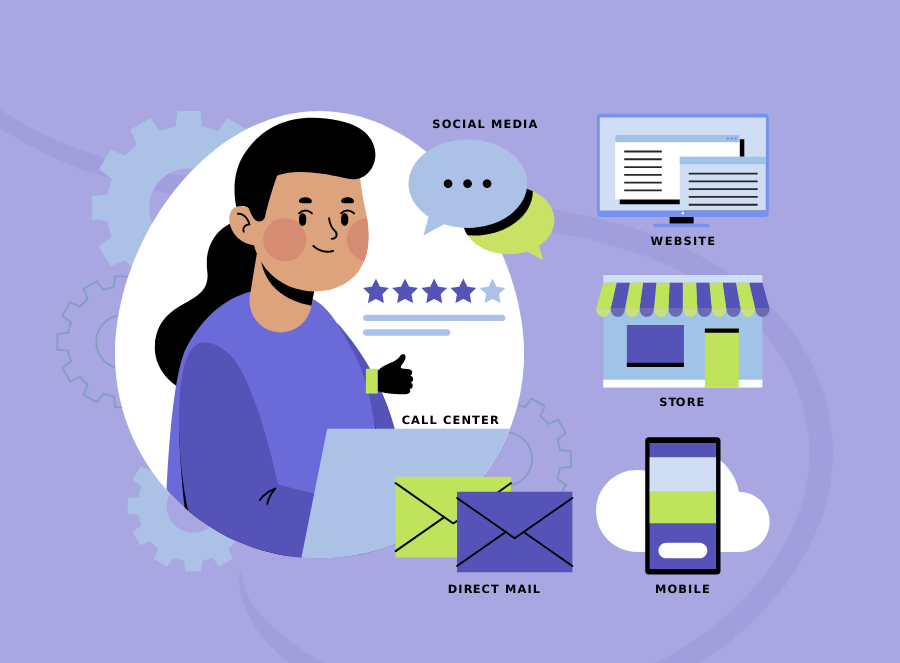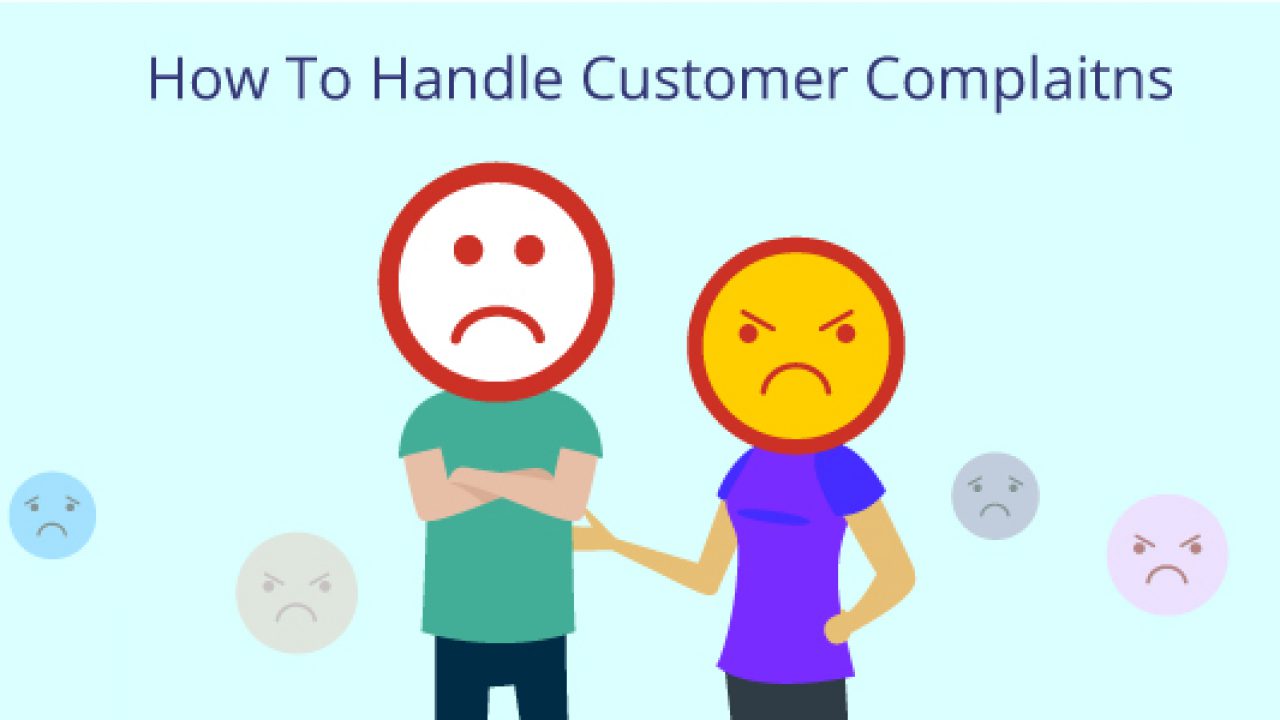The Ultimate Guide to Retaining Clients for Years: 7 Steps to Building Long-lasting Relationships
Client retention is vital for sustained business success. While acquiring new customers is important, cultivating long-term relationships is the key to recurring revenue, positive word-of-mouth, and reduced marketing costs. In this article, discover the essential steps to retaining clients for years. From understanding their needs to delivering exceptional service and building trust, these strategies will help businesses establish strong relationships, enhance customer satisfaction, and foster loyalty. Transform your clients into brand ambassadors and unlock your marketing potential in the market.
In this article, we will explore the seven essential steps to retaining clients for years. By following these steps, businesses can establish strong relationships, enhance customer satisfaction, and foster loyalty. From understanding client needs to delivering exceptional customer service and building trust, each step contributes to a comprehensive client retention strategy.
Steps to Building Long-lasting Relationships
Step 1: Understanding Client Expectations and Needs

Understanding client expectations and needs is crucial for building strong relationships in business. When you have a clear understanding of what your clients expect from your products or services and what their needs are, you can align your offerings to meet those expectations, provide personalized experiences, and deliver value that exceeds their desires. This understanding enables you to establish trust, enhance customer satisfaction, and ultimately boost customer retention. Here are some actionable tips for identifying and analyzing client expectations:
- Effective Communication: Actively listen to your clients during interactions to gain insights into their expectations. Encourage open and honest communication, ask probing questions, and seek clarification to ensure you have a comprehensive understanding of their needs.
- Conduct Research: Use market research techniques to gather data and insights about your target audience. Surveys, focus groups, and customer interviews can provide valuable information about their preferences, pain points, and expectations.
- Analyze Customer Data: Leverage customer relationship management (CRM) systems and analytics tools to collect and analyze data on customer behavior, interactions, and purchase history. This data can reveal patterns and trends that help you understand their expectations and personalize your offerings.
- Monitor Social Media: Monitor social media platforms to listen to customer feedback, comments, and conversations about your brand. This can help you identify emerging trends, address concerns promptly, and gain a deeper understanding of customer expectations.
- Seek Customer Feedback: Proactively seek feedback from your clients through surveys, feedback forms, or online review platforms. Encourage them to share their experiences, suggestions, and expectations. This direct input can provide valuable insights for improving your products, services, and customer experience.
When it comes to gathering client feedback and preferences, here are some effective techniques:
- Personalized Interactions: Engage in personalized conversations with clients to understand their specific needs, pain points, and expectations. Tailor your approach and recommendations based on their individual circumstances.
- Customer Advisory Boards: Establish a customer advisory board consisting of select clients who can provide feedback, suggestions, and insights on your products or services. Regularly meet with this group to gather their perspectives and involve them in shaping your offerings.
- Beta Testing: Offer select customers the opportunity to participate in beta testing new products or features. Their feedback can help you identify potential issues, make improvements, and ensure that the final product meets their expectations.
- Continuous Surveys: Implement ongoing survey mechanisms to gauge customer satisfaction and measure their evolving expectations. Regularly check in with your clients to understand if their needs have changed and how you can adapt to meet them.
By understanding and analyzing client expectations, gathering feedback, and adapting your offerings accordingly, you can foster strong relationships, enhance customer loyalty, and increase customer retention. Remember, building trust and delivering value is key to maintaining long-term partnerships with your clients.
Step 2: Delivering Exceptional Customer Service

Exceptional customer service plays a crucial role in retaining clients by fostering loyalty, satisfaction, and positive relationships between businesses and their customers. When customers receive personalized and memorable experiences, coupled with effective communication and timely responsiveness, they are more likely to remain loyal and continue doing business with a company. Here are some tips for delivering exceptional customer service to enhance client retention:
- Personalize Experiences: Treat each customer as an individual and tailor your interactions to their specific needs and preferences. Take the time to understand their preferences, history with your business, and any unique requirements they may have. By personalizing your interactions, you demonstrate that you value and care about their experience.
- Go the Extra Mile: Strive to exceed customer expectations by going above and beyond what is required. Surprise them with unexpected gestures of goodwill, such as sending personalized thank-you notes, offering exclusive discounts or rewards, or providing additional support when needed. These extra efforts create positive emotional connections and leave a lasting impression.
- Empower Employees: Ensure that your frontline employees have the authority, knowledge, and tools necessary to resolve customer issues promptly and effectively. Empower them to make decisions that prioritize customer satisfaction and enable them to take ownership of customer concerns. Empowered employees can deliver seamless and efficient service, enhancing the overall customer experience.
- Active Listening: Practice active listening to understand customers’ needs and concerns fully. Encourage customers to share their feedback, and show genuine interest and empathy in their experiences. Actively listening to customers helps build trust, demonstrates that their opinions are valued, and allows you to address any issues or challenges proactively.
- Timely Responsiveness: Promptly address customer inquiries, concerns, or complaints. Whether it’s through phone, email, or social media channels, prioritize timely responses to show that you value their time and are committed to resolving any issues they may have. Be transparent about response times and set realistic expectations.
- Continuous Improvement: Regularly assess and improve your customer service processes based on customer feedback and evolving needs. Implement feedback loops, conduct customer surveys, and analyze customer interactions to identify areas for improvement. By continuously striving to enhance your customer service, you demonstrate your commitment to delivering exceptional experiences.
Remember, exceptional customer service is a continuous effort that requires dedication and a customer-centric mindset. By delivering personalized and memorable experiences, actively listening to customers, and maintaining effective communication, you can cultivate strong relationships and significantly increase client retention.
Step 3: Building Trust and Credibility

Trust and credibility play a crucial role in client retention. When customers trust a business and perceive it as credible, they are more likely to continue their relationship, make repeat purchases, and become loyal advocates. Building trust and credibility requires consistent effort and a customer-centric approach. Here are some strategies for building trust and credibility, along with examples of businesses that have successfully implemented them:
- Transparency: Being transparent with clients fosters trust by demonstrating honesty and openness. This involves clear and effective communication, setting realistic expectations, and taking responsibility for any shortcomings. For example, Buffer, a social media management platform, regularly shares information about the company’s performance, goals, and challenges, building trust with their users.
- Consistent Delivery: Consistency in delivering products, services, and experiences is key to building credibility. When a business consistently meets or exceeds customer expectations, it establishes a reputation for reliability. Apple is known for its consistent delivery of high-quality products and exceptional customer service, which has contributed to its strong customer loyalty.
- Personalized Approach: Tailoring interactions and experiences to individual customers helps build trust and credibility. Businesses can leverage customer data and insights to provide personalized recommendations, anticipate needs, and offer relevant solutions. Amazon excels in this area by using customer purchase history and browsing behavior to provide personalized product recommendations, creating a sense of trust and understanding.
- Social Proof: Demonstrating that others trust and endorse a business can significantly enhance credibility. Testimonials, reviews, and case studies showcasing positive experiences and outcomes can influence potential customers’ trust. Airbnb utilizes social proof by displaying verified guest reviews and ratings for each accommodation, helping potential guests feel more confident in their booking decisions.
- Exceptional Customer Service: Providing outstanding customer service goes a long way in building trust and credibility. Promptly addressing inquiries, resolving issues, and going the extra mile to ensure customer satisfaction demonstrates a commitment to their well-being. Zappos, an online shoe and clothing retailer, is renowned for its exceptional customer service, which has earned the company a loyal customer base.
- Thought Leadership: Establishing expertise and thought leadership in the industry can enhance credibility. Sharing valuable knowledge through content marketing, industry insights, and educational resources positions a business as a trusted authority. HubSpot, a marketing and sales software provider, offers a wealth of educational resources, including blogs, webinars, and certifications, establishing itself as a credible source in the marketing field.
- Consistency in Branding: Consistent branding across all touchpoints reinforces credibility. When a business maintains a cohesive and professional brand image, it signals reliability and trustworthiness. Coca-Cola has successfully built credibility with its iconic branding, maintaining a consistent visual identity and messaging that resonates with consumers worldwide.
By implementing these strategies and consistently prioritizing trust and credibility, businesses can build strong and lasting relationships with their clients. Trust and credibility serve as the foundation for client retention and pave the way for long-term success.
Step 4: Adding Value through Continuous Improvement

Continuous improvement refers to the ongoing effort to enhance processes, products, and services through incremental advancements. It involves regularly identifying areas for improvement, making changes, and measuring the results, with the aim of delivering better value to clients. When applied effectively, continuous improvement can have a significant impact on client retention.
To identify areas for improvement, consider the following actionable advice:
- Gather client feedback: Actively seek feedback from clients regarding their experience with your business. This can be done through surveys, interviews, or online reviews. Encourage honest feedback to gain valuable insights into areas that require attention.
- Analyze client behavior: Monitor client behavior patterns and identify any areas where they may be encountering challenges or experiencing dissatisfaction. Look for opportunities to streamline processes, remove bottlenecks, or improve overall efficiency.
- Conduct internal assessments: Regularly assess your internal operations and workflows. Engage employees in identifying areas where improvements can be made, as they often have valuable insights and firsthand experience with client interactions.
- Stay informed about industry trends: Keep abreast of industry trends, best practices, and innovations. Look for ways to adapt and integrate new ideas or technologies that can enhance the client experience and differentiate your business from competitors.
Implementing client feedback and suggestions brings several benefits:
- Enhanced client satisfaction: By acting on client feedback, you demonstrate that you value their opinions and are committed to meeting their needs. This fosters a stronger sense of trust and satisfaction, increasing the likelihood of client retention.
- Tailored solutions: Client feedback provides valuable insights into their specific requirements and pain points. Implementing their suggestions allows you to customize your products or services to better align with their needs, resulting in increased client loyalty.
- Competitive advantage: Continuous improvement based on client feedback allows you to stay ahead of the competition. By consistently adapting and refining your offerings, you demonstrate your commitment to delivering exceptional value, making it more difficult for clients to consider alternatives.
- Positive word-of-mouth and referrals: Satisfied clients who see their feedback being implemented are more likely to become advocates for your business. They may share their positive experiences with others, leading to new client acquisitions through word-of-mouth referrals.
Remember, continuous improvement is an ongoing process. Regularly review feedback, measure the impact of implemented changes, and seek further opportunities for improvement. By prioritizing client feedback and making meaningful enhancements, you can foster stronger client relationships and improve client retention rates.
Step 5: Anticipating and Exceeding Client Expectations

Anticipating and exceeding client expectations is crucial for long-term customer retention. When a business consistently goes above and beyond to surpass client expectations, it not only fosters loyalty but also creates a positive reputation and word-of-mouth referrals. Here are the importance, strategies, and examples of businesses excelling in this area:
Importance of Surpassing Client Expectations:
- Differentiation: By exceeding expectations, a business stands out from its competitors and offers a unique value proposition that sets it apart.
- Customer Satisfaction: When clients receive more than they anticipated, they feel valued and satisfied, which leads to increased loyalty and repeat business.
- Brand Advocacy: Delighted customers are more likely to become brand advocates, recommending the business to others and contributing to its growth.
- Competitive Advantage: Surpassing expectations can become a key differentiator, attracting new customers and retaining existing ones, giving the business a competitive edge.
Strategies for Anticipating and Exceeding Client Expectations:
- Proactive Communication: Regularly engage with clients to understand their needs, preferences, and challenges. Anticipate their requirements and communicate solutions in advance.
- Personalization: Tailor products, services, and interactions with individual clients, demonstrating that their specific needs are understood and valued.
- Continuous Improvement: Continuously evaluate and enhance products, services, and processes based on customer feedback, industry trends, and emerging technologies.
- Surprise and Delight: Offer unexpected perks, rewards, or personalized gestures to exceed expectations and create positive emotional connections.
- Anticipate Future Needs: Anticipate upcoming trends, challenges, or industry changes and proactively provide solutions or suggestions to help clients navigate them successfully.
Examples of Businesses Excelling in Surpassing Client Expectations:
- Zappos: The online shoe and clothing retailer is renowned for its exceptional customer service, going above and beyond to deliver surprises, like overnight shipping upgrades or personalized thank-you notes.
- Amazon: With features like one-click ordering, personalized recommendations, and fast delivery, Amazon consistently exceeds customer expectations, providing a seamless and convenient shopping experience.
- Ritz-Carlton: Known for its legendary service, the luxury hotel chain empowers its employees to anticipate guest needs and deliver personalized experiences that go beyond traditional hospitality.
- Apple: The tech giant excels in product design, user experience, and customer support, consistently surprising customers with intuitive interfaces, innovative features, and exceptional after-sales service.
By consistently surpassing client expectations, businesses can foster long-term relationships, drive customer loyalty, and create a positive brand reputation that leads to sustained growth and success.
Step 6: Nurturing Long-term Relationships

Nurturing long-term relationships with clients is of great significance for businesses. Building strong and lasting connections with customers not only helps in boosting customer retention but also contributes to brand loyalty and advocacy. Here’s why nurturing long-term relationships is crucial:
- Trust and Loyalty: By consistently engaging with clients and delivering on their expectations, you establish trust. Trust is the foundation of any successful long-term relationship, as it encourages clients to remain loyal to your brand and continue doing business with you.
- Repeat Business: Sustaining long-term relationships increases the likelihood of repeat business. When clients have a positive experience and feel valued, they are more likely to return for future purchases or engage in your services again.
- Word-of-Mouth Referrals: Loyal and satisfied clients are more inclined to recommend your business to others. Positive word-of-mouth referrals are powerful marketing tools that can attract new customers and expand your client base.
Tips for building rapport and maintaining regular communication:
- Personalization: Tailor your interactions to the specific needs and preferences of each client. Address them by name, remember their preferences, and provide personalized recommendations or solutions. This demonstrates that you value their individuality.
- Effective Communication: Maintain open lines of communication by responding promptly to inquiries, addressing concerns, and providing updates on relevant information or new offerings. Utilize various channels, such as email, phone calls, social media, or even in-person meetings, based on your client’s preferences.
- Active Listening: Pay attention to your client’s feedback, concerns, and suggestions. Actively listen to their needs and demonstrate empathy. Showing that you understand and care about their goals and challenges helps foster a deeper connection.
Benefits of loyalty programs and exclusive offers for existing clients:
- Incentivizing Repeat Business: Loyalty programs offer rewards, discounts, or exclusive offers to existing clients, encouraging them to choose your brand over competitors. These incentives create a sense of exclusivity and appreciation, increasing customer retention.
- Increased Customer Engagement: Loyalty programs provide an avenue for ongoing engagement. By communicating exclusive offers, new product releases, or personalized recommendations, you keep clients engaged with your brand, fostering a stronger relationship.
- Customer Data and Insights: Loyalty programs provide valuable data on customer behavior, preferences, and purchasing patterns. This information can be used to tailor marketing strategies, improve product offerings, and enhance the overall customer experience.
Remember, nurturing long-term relationships requires consistent effort and a customer-centric approach. By investing in personalized communication, demonstrating value, and offering incentives, you can cultivate loyal and satisfied clients who will support your business over the long term.
Step 7: Resolving Issues and Handling Complaints

Addressing client issues and complaints effectively is crucial for maintaining a strong customer base and fostering long-term relationships. Handling complaints professionally and resolving issues promptly not only demonstrates a commitment to customer satisfaction but also has a significant impact on client retention. Here’s a discussion on the importance of addressing client issues and complaints effectively, along with guidance on handling complaints professionally and resolving issues promptly.
Importance of Addressing Client Issues and Complaints:
When clients encounter problems or have complaints, it’s an opportunity for businesses to showcase their commitment to customer service and problem-solving. Ignoring or mishandling these issues can lead to dissatisfied customers, negative word-of-mouth, and potential loss of business. Conversely, effectively addressing complaints can turn unhappy customers into loyal advocates. It shows that the business values their feedback, takes their concerns seriously, and is dedicated to providing a satisfactory resolution.
Guidance for Handling Complaints Professionally:
a. Listen attentively: Give clients an opportunity to express their concerns fully. Practice active listening to understand their perspective and emotions associated with the issue.
b. Remain calm and empathetic: Stay composed and show empathy towards the client’s situation. Acknowledge their feelings and validate their concerns.
c. Apologize sincerely: Offer a genuine apology for any inconvenience or negative experience they may have had. This helps in diffusing tension and shows that the business takes responsibility.
d. Investigate and gather information: Gather all relevant details about the complaint, including dates, names, and any supporting documentation. This demonstrates thoroughness and ensures a comprehensive understanding of the issue.
e. Communicate clearly and transparently: Keep the client informed throughout the resolution process. Provide updates on progress, explain the steps being taken, and set realistic expectations regarding timelines.
f. Provide a fair resolution: Offer a resolution that is appropriate, fair, and tailored to the client’s specific situation. Strive to exceed their expectations when possible.
g. Follow up: After resolving the issue, follow up with the client to ensure their satisfaction. This demonstrates the ongoing commitment to their experience and reinforces the relationship.
Impact of Efficient Problem-Solving on Client Retention:
Efficiently addressing client issues and complaints has a direct impact on client retention. When businesses handle problems promptly and professionally, they create a positive customer experience, build trust, and enhance their reputation for excellent customer service. Satisfied customers are more likely to remain loyal, provide repeat business, and refer others to the company. On the other hand, unresolved complaints or poor handling of issues can lead to customer churn, negative reviews, and a damaged brand image.
In summary, addressing client issues and complaints effectively is essential for maintaining customer satisfaction, loyalty, and retention. By following the guidance provided and demonstrating a commitment to resolving problems promptly and professionally, businesses can turn complaints into opportunities to strengthen customer relationships and enhance their overall reputation.
Conclusion
The article discusses several strategies shared by professionals to boost customer retention rates for businesses. The key takeaways from these strategies are as follows:
- Show Transparency: Build trust through honesty and accountability.
- Tighten Relationship Focus: Understand client concerns and offer personalized support.
- Prioritize Customer Experience: Exceed expectations and provide empathetic service.
- Engage on Social Media: Connect with customers, address queries, and foster loyalty.
- Measure Customer Value: Use technology to tailor offerings based on preferences.
- Send Thank-You Notes: Personalize interactions and leave a lasting impression.
- Share a Common Cause: Deepen connections by aligning with shared values.
These strategies emphasize the importance of long-term client retention by building trust, providing exceptional experiences, and establishing meaningful connections. By implementing these tactics, businesses can turn first-time buyers into loyal advocates for their brands. And by implementing them, businesses can not only retain clients but also turn them into brand ambassadors, generating a positive ripple effect for their success in the market.



